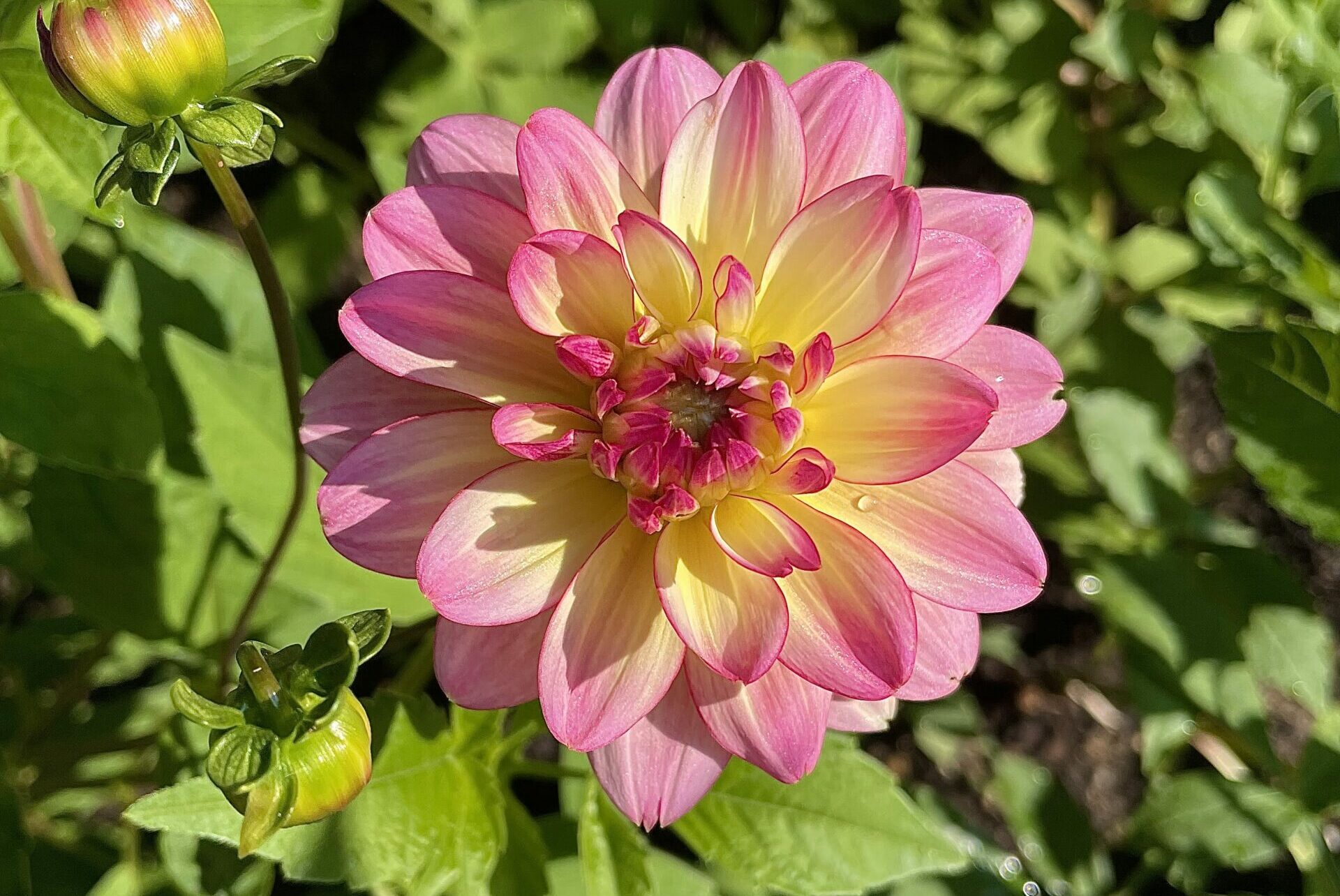A year ago or so, my husband and I decided to try a cut flower garden after hearing about the results from a friend. Just from a single raised bed and a few pots, she created gorgeous small bouquets to adorn her house and gift to neighbors. In fact, her blooms were so prolific that she started a system where recipients of a bouquet could bring back their empty jar, and she would refill it for free.
Thanks to a sweeping variety of plants and a vast library of knowledge shared by other gardeners on social media, creating your own cut flower garden might be simpler than you think!

How to Get Started With a Cut Flower Garden
It’s best to start small until you figure out how many flowers you’ll readily use, and what types of blooms you like. Once you nail down the basics, the opportunities to fill more beds with other gorgeous plants are practically endless.
1. Select your location.
You know the adage: “location, location, location.” There are a few factors that go into choosing the perfect spot for your garden. To get a decent bounty of flowers, you’ll likely want to use a flower bed, either raised or in-ground. You may already have an open bed just waiting to be planted, or you might need to create one. Whichever spot you choose, be sure it receives plenty of sunshine and has an adequate growing medium–generally well-draining, rich soil.
It’s also important to think about how your flower bed will match your overall outdoor aesthetic. For some, having a lot of chopped-off stalks and a bed that can be semi-barren sometimes isn’t important. However, others might prefer to put their cut flower garden in a more inconspicuous location. After all, the purpose of this garden is to harvest instead of act as landscaping.
2. Start planning what to plant.
Well before the growing season, figure out which types of foliage and flowers you want to plant. You can choose annuals (a single-year producer) and perennials (a producer that comes back yearly, more or less). Annuals like Ageratum, Cosmos, Bachelor’s Button, and Zinnia are a few favorites. Perennials great for cutting include Aster, Anemones, or Foxglove*.
*As a mom, I think it’s important to check the toxicity of plants, especially those you will have near your home and plan to bring inside as bouquets. Some varieties that are great for cutting are also toxic. If you have younger, curious children, you may want to avoid planting these types!
Some prized flowers, like Dahlias, are excellent for cutting but don’t necessarily fall into either category for Michigan residents. Dahlias have tender bulbs that won’t survive our winters, but you can dig them up in the fall, store them in your basement, and replant them in the warmer months!
Choosing Flower Varieties
There are too many flower varieties to list, but in general, here are a few things to look for when deciding what to plant.
-
Longer stems. It’s great to have flowers of varying heights, but some are just too short. Longer stems can help ensure your flowers can be used in bouquets for vases or jars.
-
Consider texture, color, and size. Bouquets are like an artist’s palette; they should be varied in texture, color, and size. For example, you might choose spherical and smaller Ball Dahlias as well as tall and angular Larkspur. Or soft Aster contrasted with harsher, more angular Black Eyed Susan. Still, the colors should complement one another, so take note of what all the flowers’ hues might look like together in a bundle.
-
Note bloom time. Some plants bloom in early spring and stop when the weather gets warm (like our favorite, Ranunculus). Others are mid to late-summer bloomers, such as many Dahlias. If you want to keep your cut flower garden producing all season long, consider each plant’s individual bloom time and season.
-
Don’t forget foliage. Getting caught up with all the colorful, vibrant flower options is easy. However, greenery is a bouquet essential, and often used as a filler. Dusty Miller, Bunny Tail Grass, Eucalyptus, or herbs such as Basil or Mint can all be excellent additions to your cutting garden!
Planting and Caring For Your Garden
Many cut-flower gardeners plant their flowers in rows to keep things tidy and make gardening easier. You’ll still want to note the plant’s bloom times, though, so that you can stagger your planting to ensure something is always flowering.
Like a vegetable or herb garden, cut flower gardens require regular watering, weeding, and feeding. Unlike your veggie patch, you’ll also need to follow each plant’s instructions for deadheading. Deadheading is the practice of removing spent (or dead) flower heads to encourage new blooms. It’s often best to do this with shears.
You will also want to use sharp, clean shears to collect your harvest. Typically, it’s advised to snip flowers in the early morning or evening to avoid further stressing the plants in the hottest, harshest parts of the day.
Have fun with it!
Even if you tie a handful of flowers together with a bundle of kitchen twine, it’s likely your friend or neighbor will be more than happy to receive the vibrant, floral surprise. Cut flower gardens are meant to be enjoyed by everyone. Don’t be afraid to share your newfound hobby, even if your bouquets look nothing like the armfuls sold in stores. With a little planning and tender love, you’ll have homegrown gifts to share all season long!









